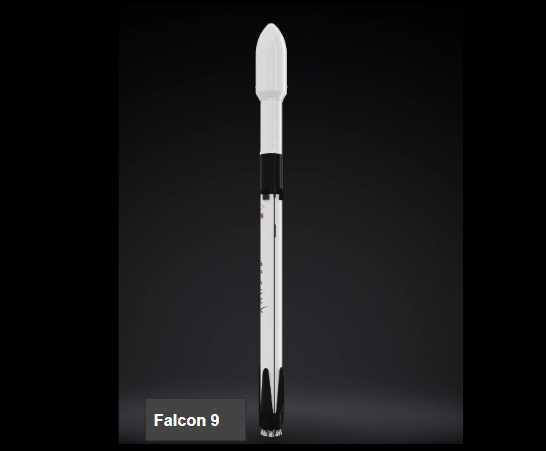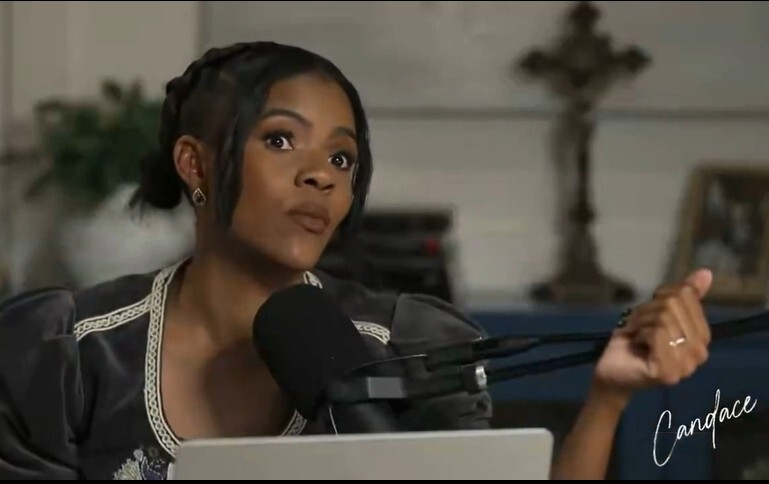Manufactured by Elon Musk's company SpaceX, Falcon 9 is the first and currently the only reusable orbital class rocket capable of transporting payload to space. The world class space vehicle is 43 ft long with a diameter of 17.1 ft; weighs 1,207,920 lb, and can carry payload up to 50,265 lb. It generates more than 1.7 million pounds of thrust at sea level.
Falcon 9 is made up of first and second(upper) stages connected by a composite structure, called the interstage, which houses the pneumatic pushers that allow stages to separate during flight. Four hypersonic grid fins positioned at the base of the interstage work to orient the rocket during reentry by moving the center of pressure.
The first stage has nine Merlin engines and aluminum-lithium alloy tanks containing liquid oxygen and rocket-grade kerosene (RP-1) propellant. The second stage, powered by a single Merlin Vacuum Engine, delivers Falcon 9’s payload to the desired orbit. The second stage engine can be restarted multiple times to place multiple payloads into different orbits.
The fairing, made of a carbon composite material, protects satellites on their way to orbit. The protective cover is jettisoned approximately 3 minutes into flight, and routinely recovered for reuse on future missions.
SpaceX's Falcon Heavy is composed of three reusable Falcon 9 nine-engine cores whose 27 Merlin engines together generate more than 5 million pounds of thrust at liftoff, equal to approximately eighteen 747 aircraft. It can lift nearly 141,000 lbs of payload to orbit.
During a typical Falcon Heavy mission, the core booster is usually not recovered; but its reusable side boosters usually began their landing burns about eight minutes after liftoff and separation, touching down at SpaceX’s two Landing Zones( LZ 1 and LZ 2, several miles downrange of Pad 39A, at Kennedy Space Center) and sending four successive sonic booms echoing for miles across the Space Coast. (Because of the boosters' length, the bottom of the rocket breaks the sound barrier before the top does, creating two separate sonic booms -- or, in this case, four, for the simultaneous return of two boosters.).
SpaceX launches both human flight and cargo space missions for governments and organizations around the world; including vital missions to the International Space Station(ISS) and classified national security missions for the United States military and others. SpaceX also launches its own Starlink Group missions to put satellites in orbit for its global internet service. The company has over 4,300 satellites in orbit, the largest constellation of any organization or government in the world. And it plans to put up to 10,000 within the decade.
SpaceX typically launches its rockets from Cape Canaveral Space Force Station located adjacent to Kennedy Space Center in Florida; and Vandenberg Space Force Base along California's central coast between Los Angeles and San Francisco.
Vandenberg is preferred for spacecraft requiring a north-south orbit. While Cape Canaveral is ideal for spacecraft requiring a west-east orbit. The European Space Agency observatory, Euclid, was launched on its journey into deep space, atop a SpaceX Falcon 9 rocket on July 1, from Space Launch Complex, SLC-40 at Cape Canaveral.
During a typical mission to orbit like the Starlink Group mission, after a 35-minute long propellant load sequence, Falcon 9 ignites its nine Merlin 1D engines on the first stage for a nearly 3 minute ascent. This is followed by their shutdown and the separation of the first and second stages: the stage separation.
After stage separation, the first stage flies back to earth within about eight minute after liftoff, landing on land or one of the company's drone ships like the Just Read The Instructions droneship.
Meanwhile on the second stage, the single Merlin 1D Vacuum (MVacD) engine ignites and burns for approximately six minutes to insert the Starlink satellites into a preliminary low-Earth parking orbit.
The fairing halves separate about 20 seconds into the MVacD’s first burn, and initiates their return back to Earth for recovery.
The second stage coasts for about 45 minutes, once in its initial parking orbit, to reach the orbit’s highest point or apogee. At apogee, the MVacD engine would briefly ignite for a second time to raise the altitude of the lowest point of the orbit or perigee.
After that, the second stage initiates an end-over-end rotation to create the inertia needed to deploy the Starlink satellites riding on top of its payload adapter.
After deploying, the satellites use their krypton-fueled Hall Effect thrusters to raise their orbit, first to a 350-kilometer high orbit for checkouts and then into their operational 530-kilometer high orbit. The non-reusable second stage subsequently does an intentional deorbit in cases where it still has enough fuel reserves; or intentional decay within 2 to 6 months.
During missions to the space station, Falcon 9 carries SpaceX's crewed or uncrewed Dragon -- the first private spacecraft to take humans to the station; capable of carrying up to 7 passengers or significant amounts of cargo
SpaceX has also launched multiple Falcon Heavy missions carrying payloads directly into geosynchronous orbit. The second of these two launches featured the first fully expendable Falcon Heavy mission.
The company launched its Starship, the world’s largest and most powerful rocket, last April. It has plans for at least three more launches of the rockets this year, according to Musk.
















